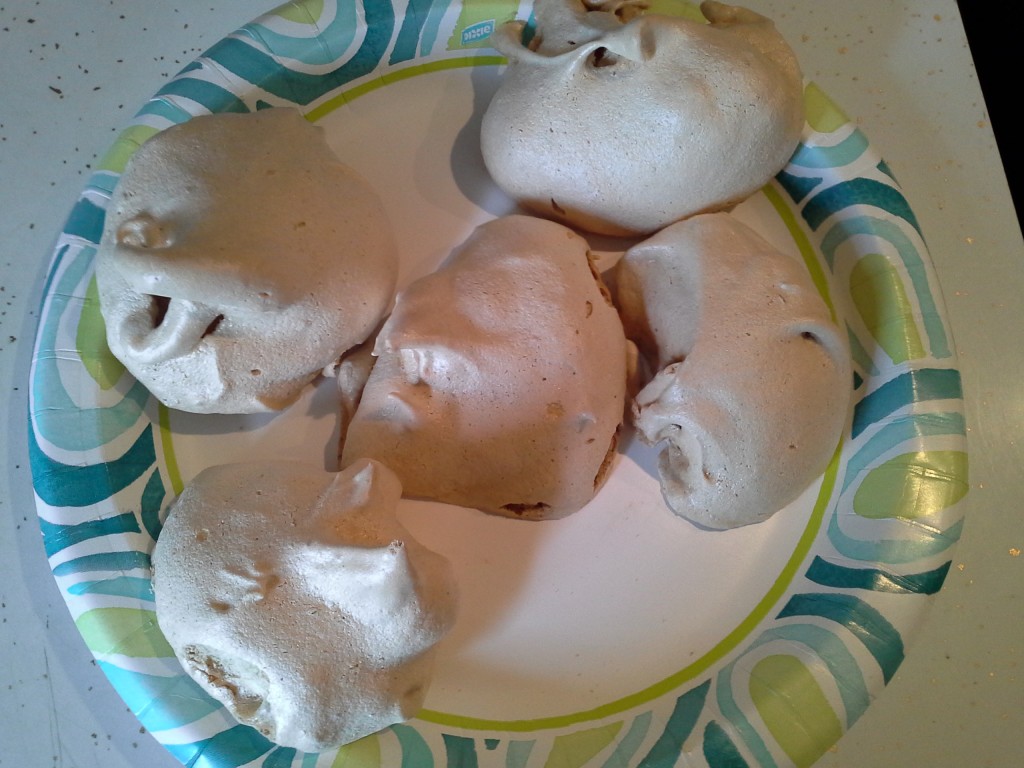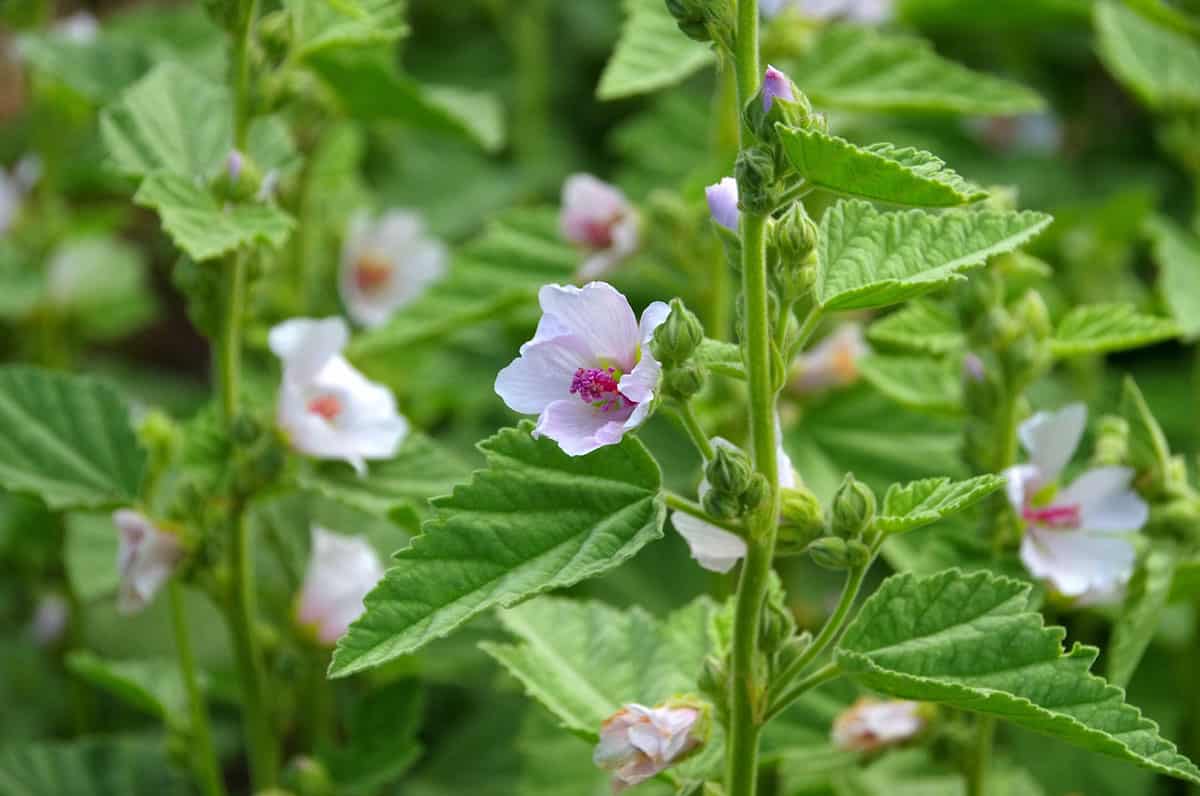You can make your own marshmallows, which are soft, fluffy, and tasty. This recipe is great because it uses real marshmallow root, which is a healthy herb. This simple marshmallow recipe uses raw honey and other traditional herbal ingredients to make it all natural. It has a great flavor that goes great with hot chocolate and s’mores.
Is Marshmallow Root in Marshmallows?
Marshmallows are a classic sweet treat that many people enjoy snacking on or using in beloved desserts like s’mores But did you know that the original marshmallows from centuries ago actually contained an herb called marshmallow root?
In this article, we’ll explore the history behind marshmallow’s name, look at how modern day commercial marshmallows are made, and discuss whether or not real marshmallow root is still used today.
The History of Marshmallows
Marshmallows get their name from the marshmallow plant, whose scientific name is Althaea officinalis. This herb grows in marshes and has been used for medicinal purposes since ancient times thanks to its mucilaginous properties.
The Ancient Egyptians were among the first to enjoy a sweetened confection made from marshmallow root sap mixed with honey. Later, in the 19th century, French confectioners refined the process of making marshmallows.
They would extract the sap from marshmallow roots and whip it into a fluffy foam with egg whites and sugar. This mixture was then poured into molds, allowed to set, and dusted with cornstarch. This yielded the soft, pillowy texture we associate with marshmallows today.
For many decades, marshmallow confections continued to be made using the root sap as one of the key ingredients. But by the mid-20th century, most mass production of marshmallows had switched over to using gelatin instead.
Modern Marshmallow Manufacturing
Walk down the snack aisle of any grocery store today, and you’ll see marshmallows made by big brands like Kraft and Campfire. Read the ingredients label on a typical bag of miniature marshmallows, and you likely won’t see any mention of marshmallow root.
So what goes into making modern marshmallows? Here are the basic ingredients:
-
Sugar (corn syrup solids or sucrose) – provides sweetness
-
Gelatin – gives marshmallows their characteristic soft, squishy texture
-
Water
-
Artificial flavors – often vanilla is used to lend flavor
-
Artificial colors – for white coloring
The manufacturing process works like this:
-
Gelatin is hydrated and whipped.
-
Hot sugar syrup is poured in and incorporated, aerating the mixture.
-
Flavors and colors are added.
-
The marshmallow fluff is poured into molds and cooled.
-
Once set, the marshmallows are coated in cornstarch to prevent sticking.
So while marshmallows got their start from the marshmallow plant, today’s mass-produced versions no longer contain any genuine marshmallow root sap. They’re more or less just sugar, gelatin, and artificial additives whipped up into an airy foam.
Homemade Marshmallows with Marshmallow Root
Thankfully, it is possible to recreate old-fashioned marshmallows at home using marshmallow root. This allows you to enjoy the sweet treat with its original source ingredient.
Making homemade marshmallows takes a bit of time and effort, but yields a natural, herbal-enhanced version you won’t find in stores. Recipes call for soaking dried marshmallow root to extract the mucilaginous sap.
This sap replaces gelatin as the gelling agent. The sap is beaten with egg whites into a fluffy meringue, before being flavored and set in molds or shapes. Other wholesome ingredients like raw honey or maple syrup lend sweetness.
The result is an all-natural, subtly-flavored marshmallow with the expected smooth, pillowy texture. Roasting homemade marshmallows over a campfire makes for a nostalgic treat. They can also be used in baking applications like whoopie pies, rice crispy treats, and rocky road fudge.
Besides adding a delicate sweetness, the marshmallow root imparts beneficial properties. Marshmallow root contains antioxidant and anti-inflammatory compounds that may help soothe sore throats, suppress coughs, and coat inflamed digestive tissues.
So while old-time marshmallows made from marshmallow root may be harder to find today, you can bring back the tradition by making your own. Just be sure to use food-grade dried marshmallow root.
Key Points:
-
Original marshmallows were made with marshmallow plant root sap for its gelling properties.
-
Modern commercial marshmallows no longer contain marshmallow root sap, using gelatin instead.
-
Homemade marshmallow recipes allow you to recreate the classic sweet using marshmallow root for texture and flavor.
-
Marshmallow root has demulcent and soothing properties that benefit sore throats, coughs, and digestion.
-
Making homemade marshmallows takes effort but yields a natural, herbal confection you won’t find in stores.
So while you won’t find any real marshmallow root in the bagged marshmallows at your grocery store, you can bring back this classic ingredient by crafting your own homemade version. Enjoy the sweet nostalgic flavor with the added health benefits of marshmallow root.

A Short Marshmallow History
Marshmallow candies were first made in Ancient Egypt, more than 2,000 years ago. They were one of the first desserts that we know of.
People say that honey was boiled with the root of the marshmallow plant to make a thick, sticky candy.
The first marshmallows that looked like the fluffy treats we eat today were made by hand in France around 1850. Until the 1950s, marshmallow roots were still used.
Then, manufacturers in the U.S. turned them into the commercial treats that we buy at the store today.
Without any trace of actual marshmallow root!
It’s a terrible shame that such an old herbal and healthy treat has been turned into a modern fake made in a factory.
And that’s why we need to take marshmallows back into our own hands and make them even better!
Alpinea officinalis, or marshmallow plant, is a flowering herb that grows in wet places like marshes, seashores, and riverbanks. It’s part of the mallow family, hence the name marshmallow.
The root of this herb is grown for its many uses, including in cooking, as medicine, and on the skin.
Medicinally, marshmallow root is known for soothing irritated tissues and can be helpful for soothing sore throats. It also supports digestion and is also used for heartburn, acid reflux, and diarrhea.

Gelatin powder is used to give marshmallows their shape. Using a high-quality grass-fed gelatin powder will also provide vitamins and nutrients.
Often, agar agar powder can be used as a gelatin substitute in recipes at a 1:1 ratio. I haven’t tried this recipe, but if you’d rather have a vegetarian or vegan marshmallow, that is an option.
Raw honey makes these homemade marshmallows sweet! For a vegan option, you could use maple syrup or try this homemade vegan honey (along with agar agar for the gelatin) as a substitute. I haven’t tested it in this recipe, but I can say it’s a good honey alternative!
Vanilla bean powder adds an earthy and natural delicious touch of vanilla flavor to these fluffy cubes.
Marshmallow root powder is the ground form of the herbal marshmallow root. It adds classic flavor as well as herbal benefits to these tasty treats.
Arrowroot powder is a gluten-free and allergy-friendly root powder that is similar to cornstarch. In this recipe, it’s used to keep the marshmallows from sticking.
You could use tapioca powder or cornstarch instead of arrowroot powder, whichever you have on hand and that works best for your body.
First, put the gelatin in the bowl of a stand mixer and add 1/2 cup of warm water. Let it sit for about 10 minutes to bloom.
In the meantime, add the other half cup of water, honey, and salt into a small pot.
On the stovetop, using a candy thermometer, toggle the heat between medium and high. Avoid stirring the mixture after the first minute so it doesn’t boil over.
Bring the temperature up to between 230-240° F (110-115° C), which takes about 10-14 minutes.
Mix the gelatin on low speed, and slowly pour the honey mixture into the stand mixer. Slowly increase the speed to high and whip until the mixture has reached its “peak. ”.
Good news! It will look and feel like real marshmallow fluff! Mine took between 6 and 10 minutes to reach its peak. In the last minute of whipping, add the marshmallow root and vanilla bean powder.
As the marshmallows are beating to peak fluff in the mixer, prepare a 9×9 pan with parchment paper. Dust the parchment paper with half of the arrowroot powder to keep the marshmallows from sticking.
As soon as the marshmallow mixture reaches its peak, quickly pour it into the pan. Use an offset spatula to flatten the top. Dust the rest of the arrowroot powder onto the top of the parchment paper.
The marshmallows will set overnight if you put the other piece of parchment paper on top of them.
You can carefully flip the marshmallow upside down onto a cutting board the next day to get it out of the pan. Take the parchment paper off and use a sharp knife to cut the marshmallows into cubes.
Why are homemade marshmallows better than store-bought?
Store-bought marshmallows are full of who-knows-what ingredients. Store-bought marshmallows are high in sugar and don’t have any real marshmallow root. Instead, make these fluffy herbal treats at home as a treat.
It’s better to make your own marshmallows because they have herbal benefits, ingredients that are whole and safe, and most importantly, you approve of them.
You can cut them to any size you want, and they will still have the gooey, fluffy, puffy texture you expect from a marshmallow. Plus, they’re simple to make!.
How to make homemade Herbal Marshmallows with marshmallow root
FAQ
Is marshmallow root the same as marshmallow?
Why did they stop using marshmallow root in marshmallows?
Do any marshmallows contain marshmallow root?
Does marshmallow root extract taste like marshmallows?
